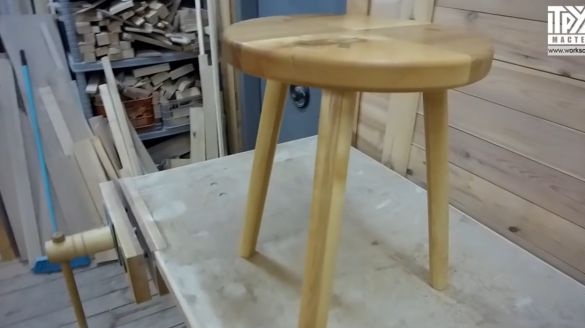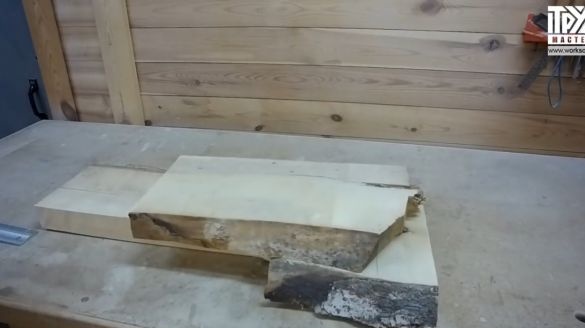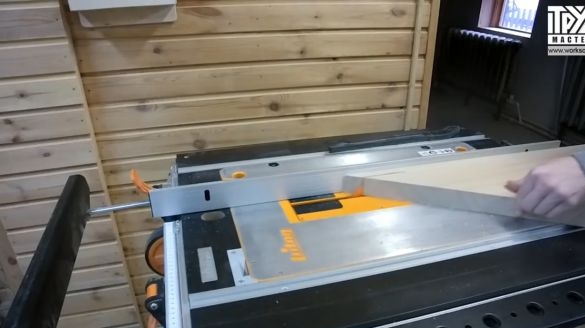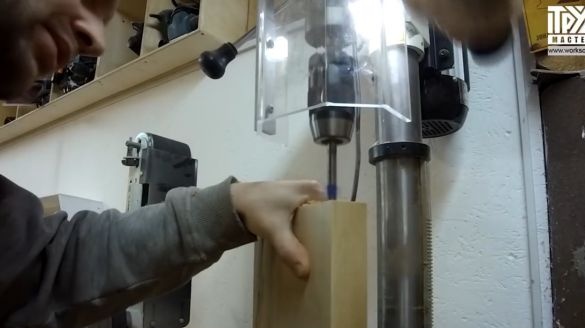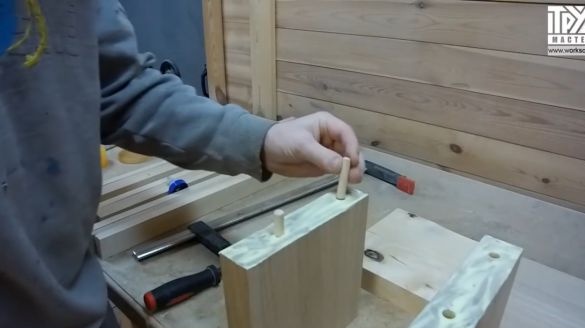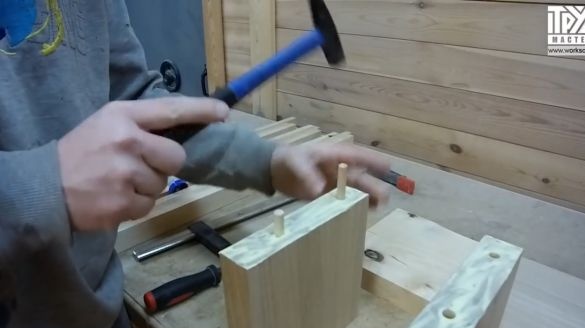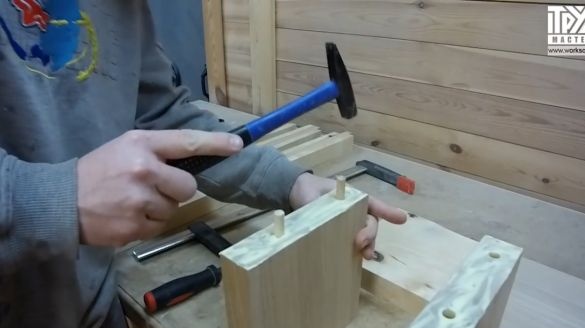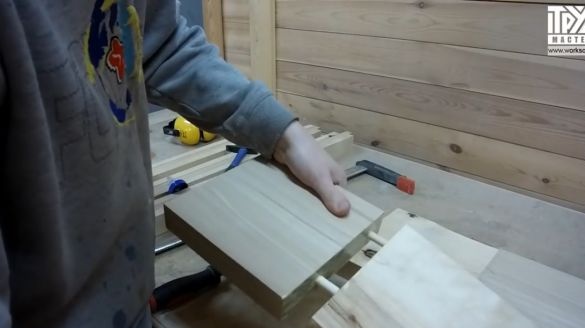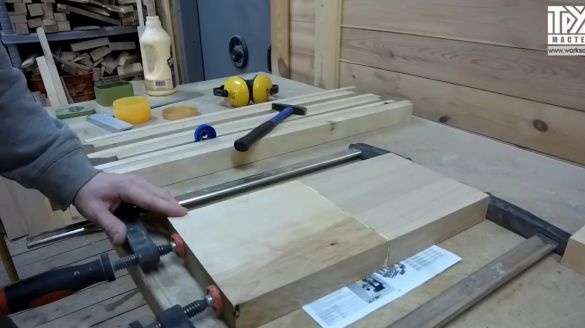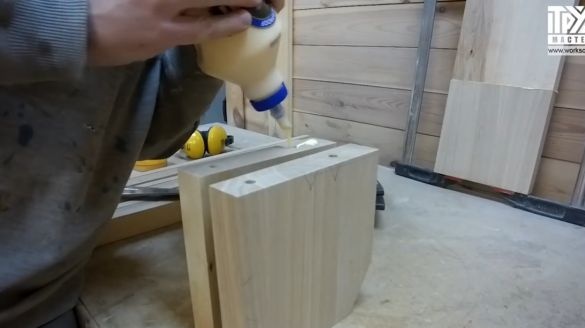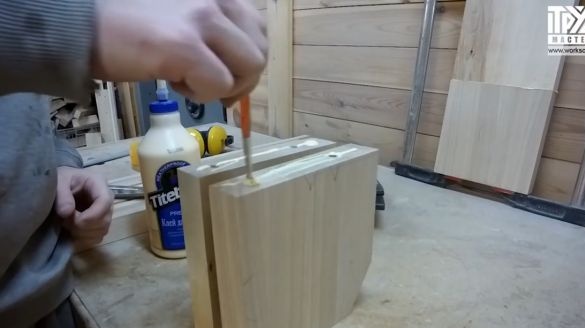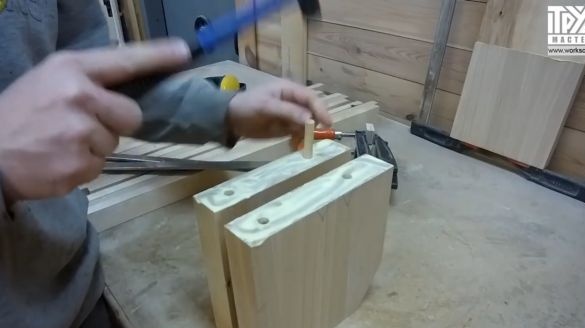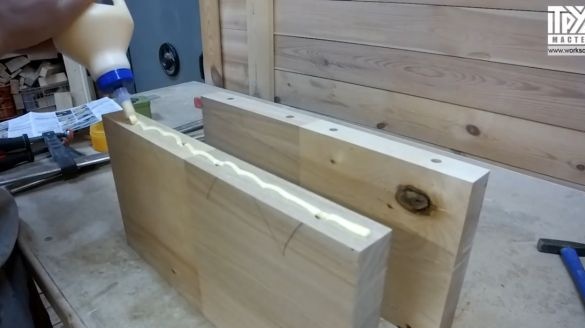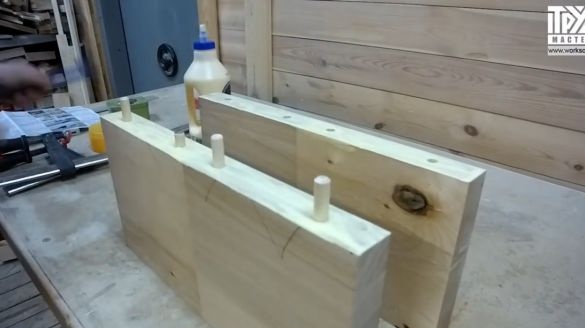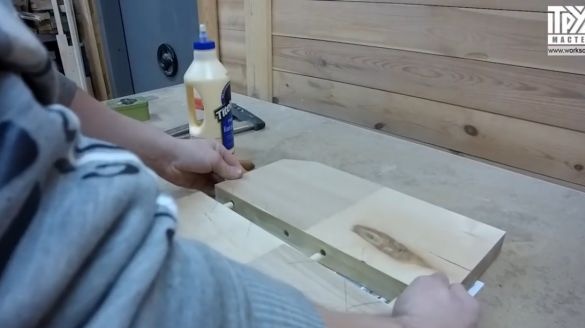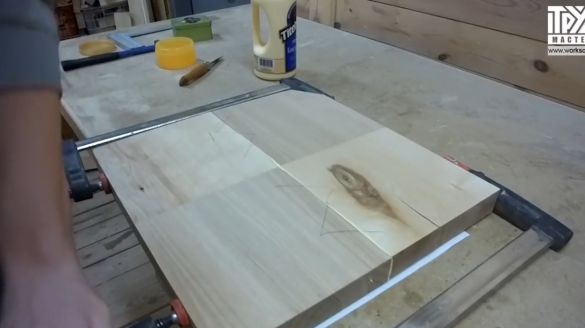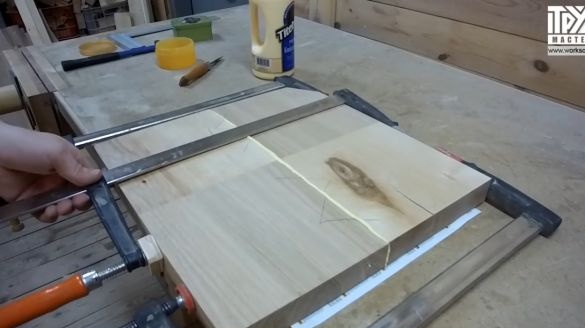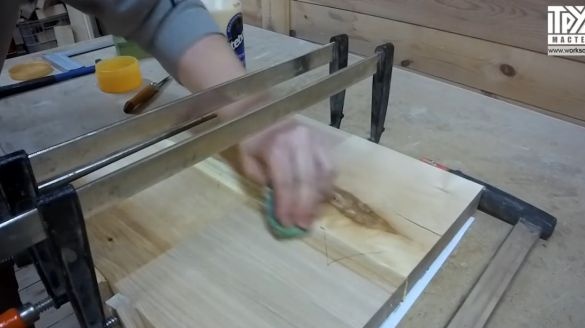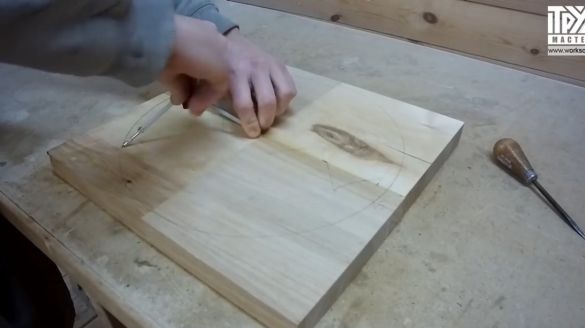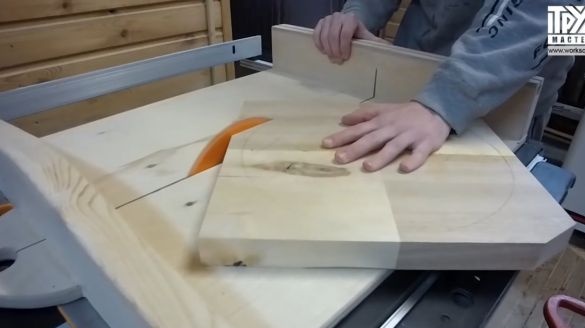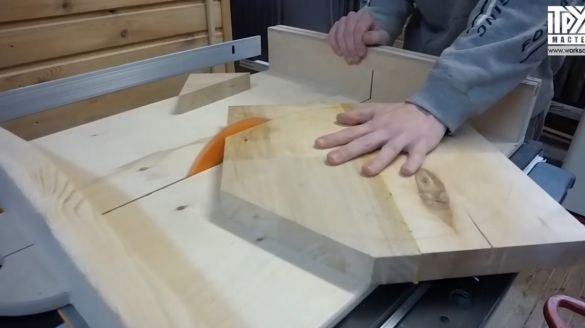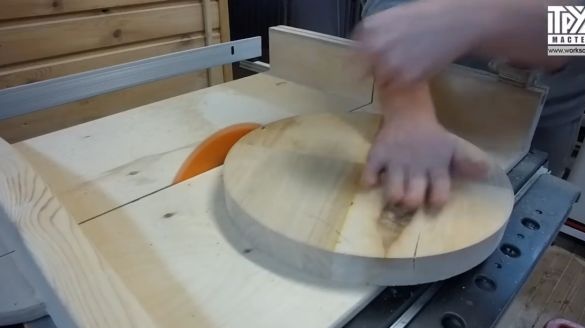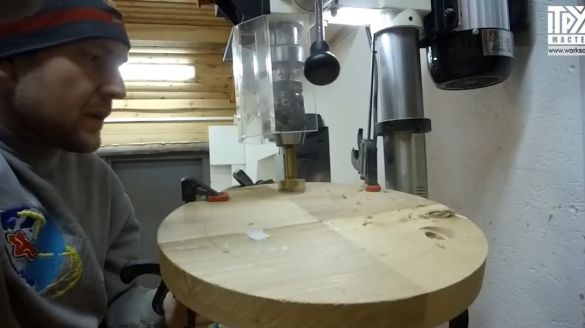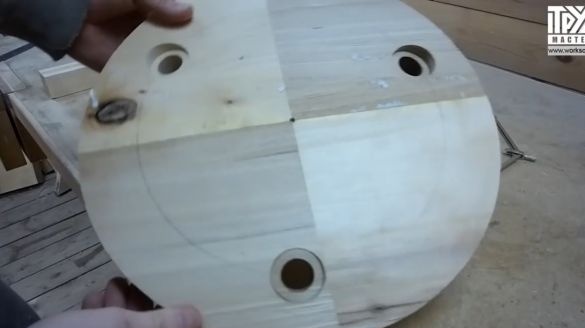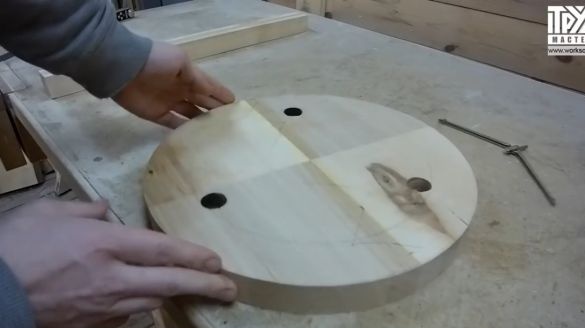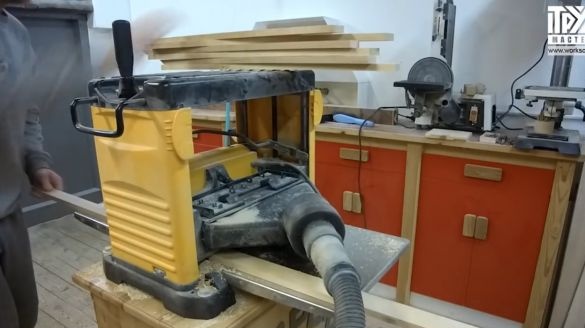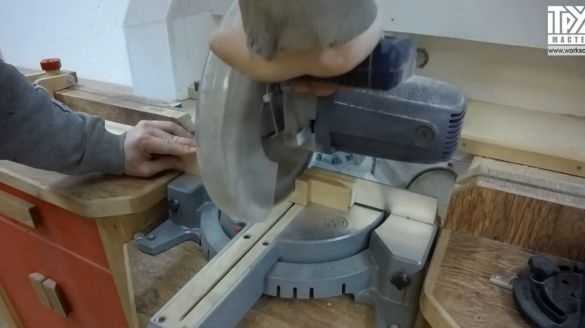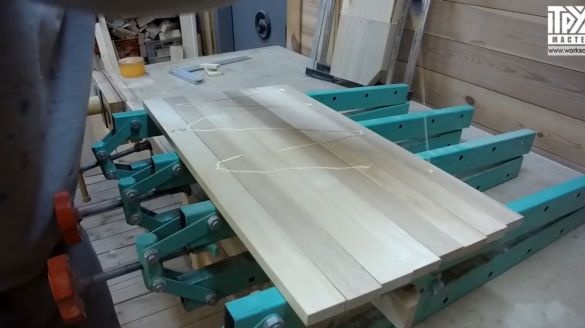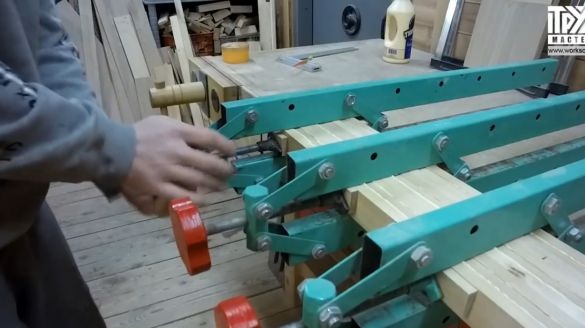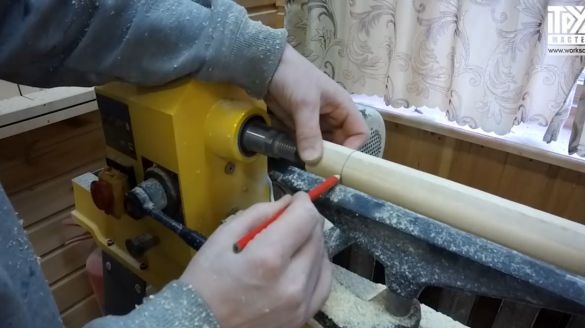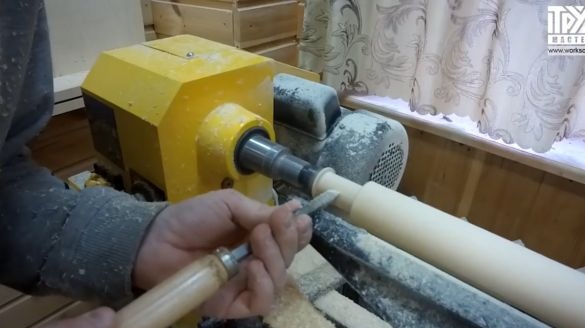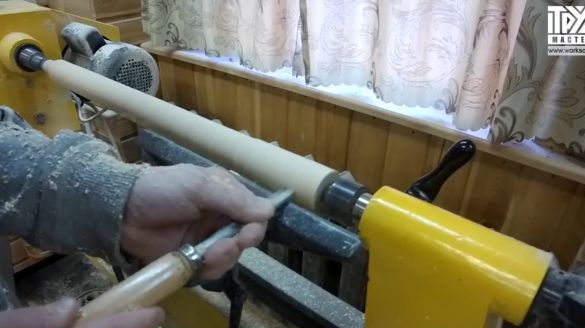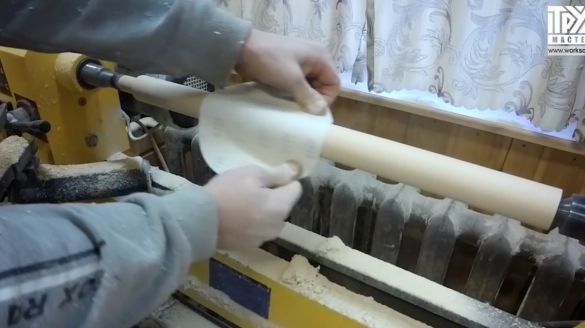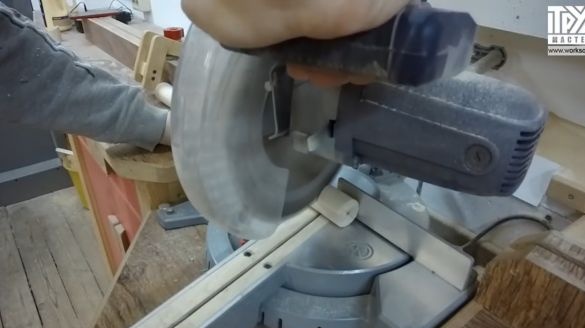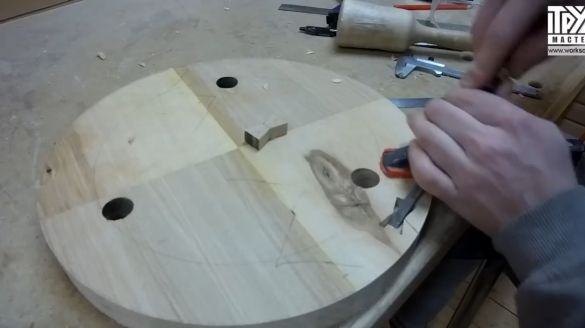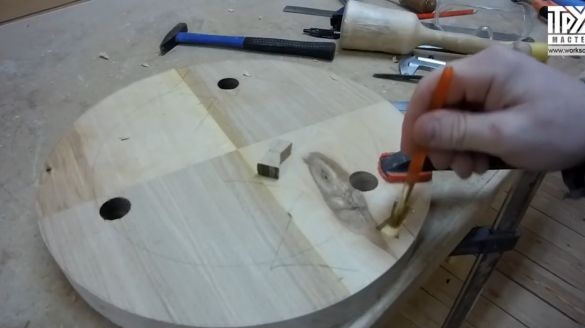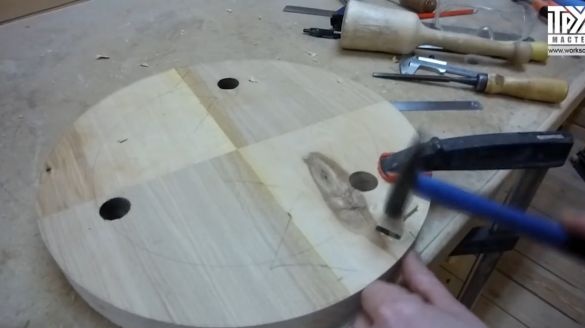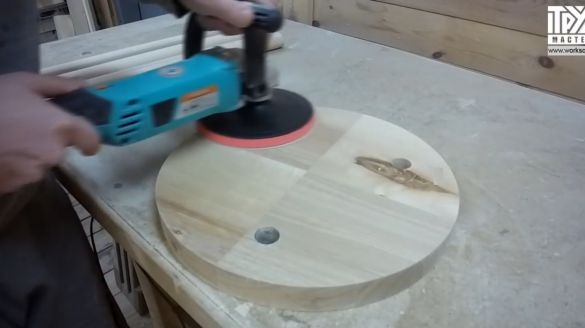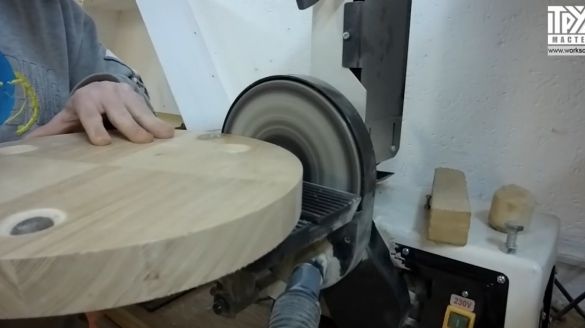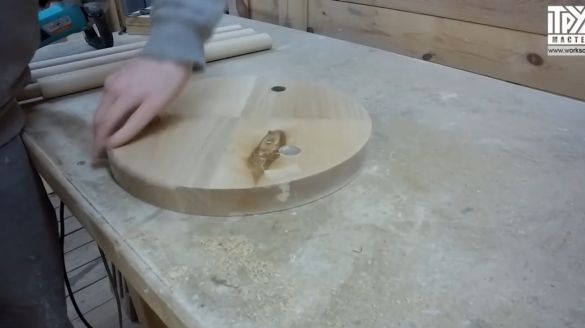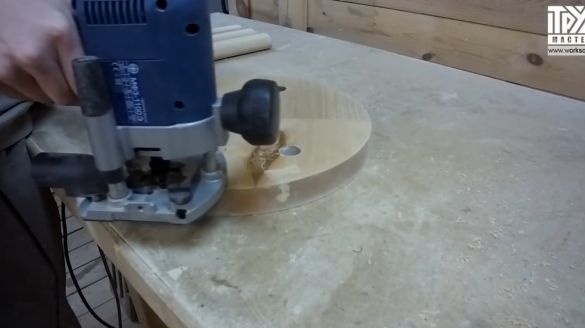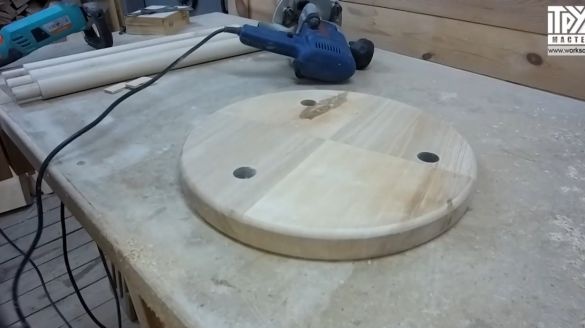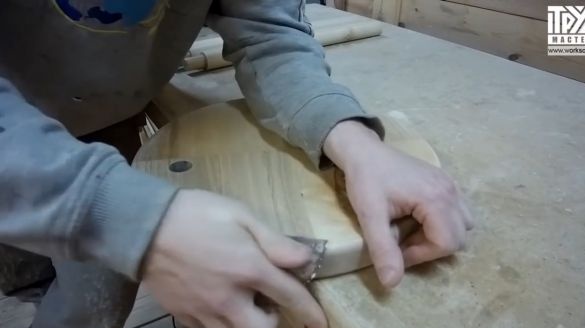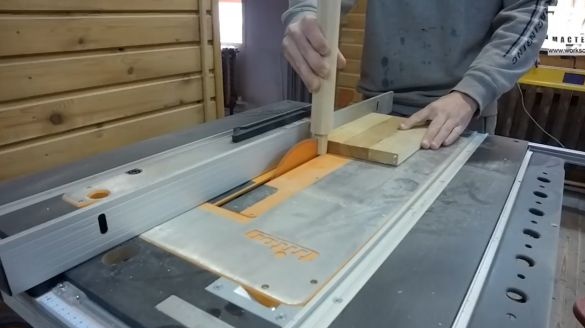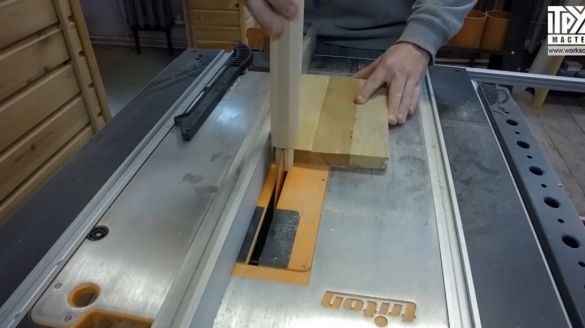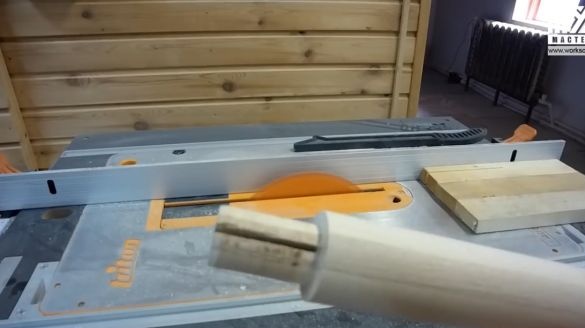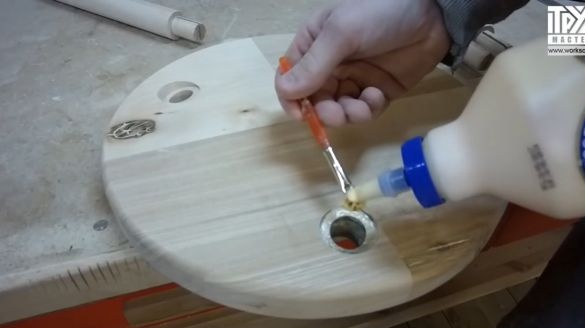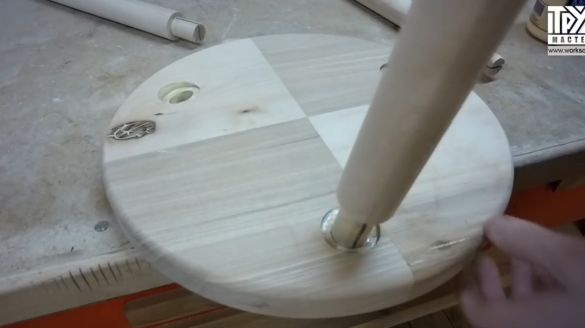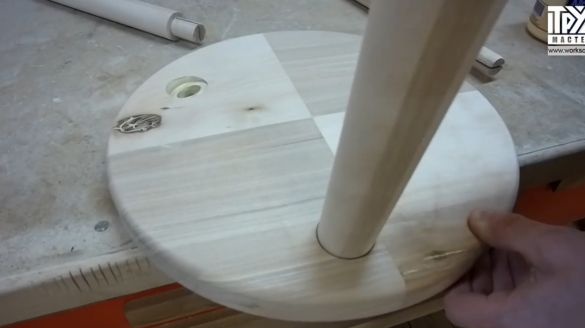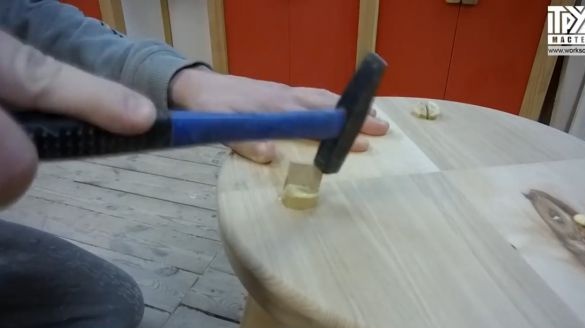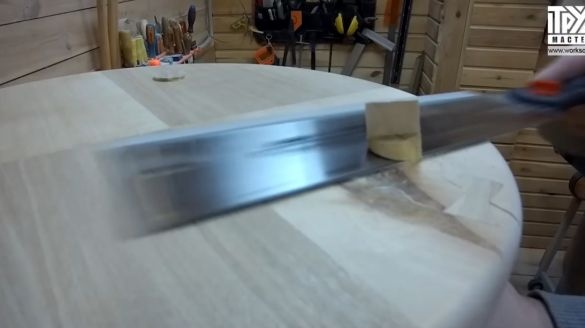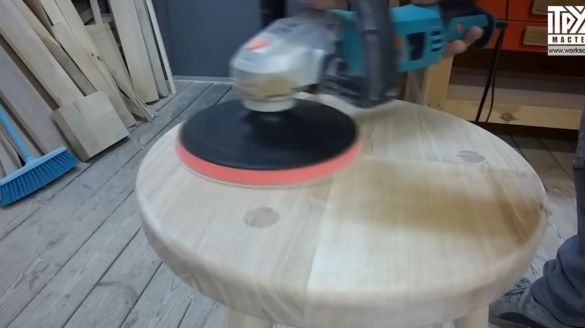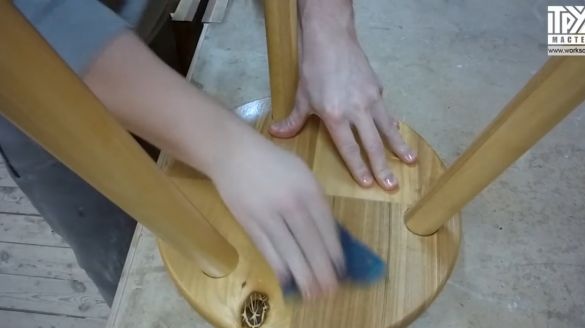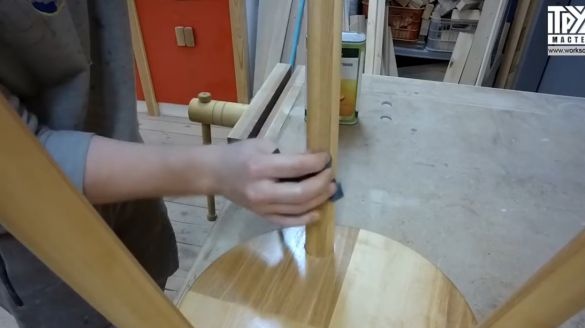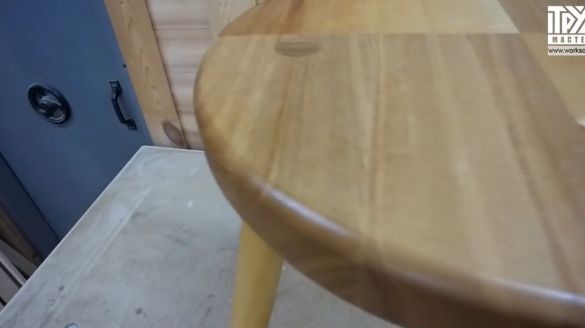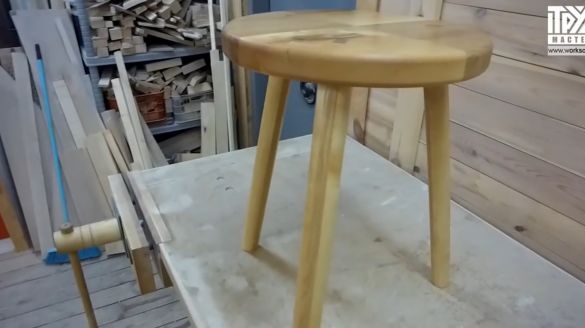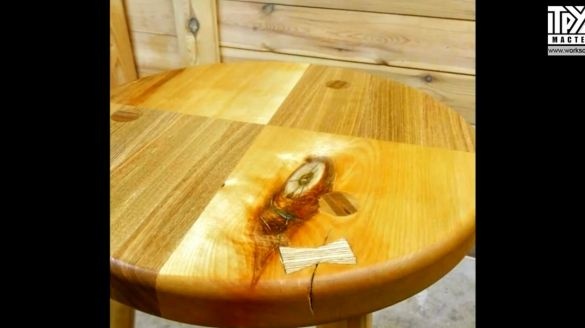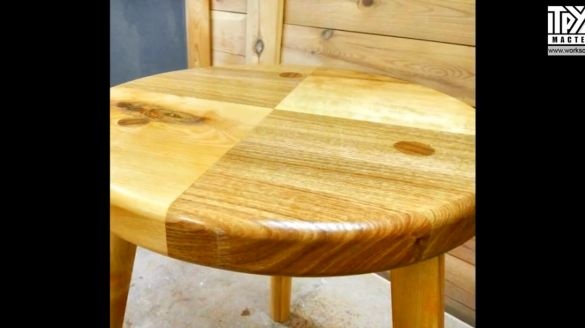Today I would like to show a rather interesting project, which is called "Stool".
As a rule, many people for some reason believe that a stool is absolutely something so frivolous that you should not invest a lot of effort, money and, accordingly, time. But I believe that if you take this more or less seriously, use good materials and moreover, plan a similar product in advance, in some programs there, for example, then, indeed, in fact, you can get a very good result. As a result, you can please yourself and your loved ones. In addition, an extra stool will not interfere in every house. Imagine a friend came to visit you, and not just one, but with a company, and here you, as a hospitable landlord, find yourself a place without any particular strain. Also, you can give this product to someone absolutely not shameful, because it looks very, very presentable. And finally, you can sell such a homemade product and earn some money on it.
Recently, the author of this project has formed a rather interesting duet regarding the materials that he uses. It is mainly birch and ash. Yes, indeed, these materials relate to hardwoods, everything is fine, but their relative cheapness is still a decisive factor, therefore the master uses such a peculiar duet literally everywhere. Seat homemade stool will consist of 4 parts. Two parts of birch, two parts of ash, such, if you want, checkers. According to the author, after finishing it should turn out quite interesting.
We will connect these halves to dowels. It was at this moment that the author sharply wanted to buy a special router for dowel joints, well, because dowels are absolutely not his topic. Not so much they, as such, strain, how much alignment. And according to the master, he had never succeeded in perfectly assembling the product on dowels.
After our two halves have successfully stuck together, we have to combine them into a single whole. We will do this again with the help of dowels, but there will already be not two of them, as last time, but four. The edge will be displayed on the planer.
By the way, the author’s machine is completely new. He recently made a mobile base for him.By the way, there are quite a few opponents of such mobile systems for such heavy units, but for the author such a system is obviously a plus, because the workshop is small, you constantly need to adjust, vary some machines and units in order to adapt to current tasks. So for the master, this is certainly a plus, and about vibration, naturally there is none, because one engine and one shaft, and if everything is calibrated and balanced by the manufacturer perfectly, that is, there are no problems, respectively.
After our blanks are finally glued together, the next step is to give the product a round shape. Indeed, this can be done in different ways, the author chose for himself probably the simplest and most understandable one. To do this, he simply fixed the blank on his wooden slide, and with the help of a sawing table, he gave it the desired shape. According to the master, it’s simply nowhere simpler.
Next, you need to drill three holes for three legs, respectively, which we will exit from the siduha at an angle. It is very convenient to do this on a drilling machine, which has a table with a tilt function.
By the way, the author pre-drilled holes, marking his workpiece into four parts. He did everything according to technology, a compass, all things. So do not think that the author takes the size somewhere there, I don’t know, from the head, or from the sky, everything is serious here.
Regarding the legs themselves. Here the author welcomes the style of minimalism, because he simply does not like to sharpen any barrel-shaped forms there, such embossed on a lathe. According to him, this is just not to his liking, so everything is pretty simple here, the straight leg itself, naturally round. The only thing that distinguishes them from many other similar products is that they are glued with a sandwich.
That is, in the middle we have a blank from ash, and on the sides, so to speak, it is embraced by blanks already made of birch. So in this case, the author expects a certain contrast, so that these legs look somehow more profitable against the background of many other similar products.
If in the author’s previous project, the Hoffman’s swallow was made exclusively purely for some decorative purposes, then in this case it is absolutely justified because a crack appeared on the workpiece during processing, and the author decided to prevent further cracking of the wooden workpiece in this way. The swallow was cut out of the same ash, so, according to the author, it should look pretty decent for itself.
After the main part of the work is almost behind, only the so-called finishing work remains. Namely, grinding, fitting and stuff like that.
In order to connect the legs to the main part, we need to make several cuts in them. This is done in order to be able to drive a wedge there.
After that, we need to glue all the legs to the siduha of the future stool. The author does this, by the way, using glue Titebond 2 (Taitbond). This glue is waterproof. Despite the fact that our home-made product will most likely be operated in home conditions, but if not at home, then somewhere still under the roof for sure, but nevertheless, the author decided to play it safe and use this most serious glue.
By the way, there is such an insidious connection, with the help of these wedges, and if you overdo it, then a crack can go. And if you do not finish it off a bit, then the connection may weaken, although, the author adds, he never had it before. In other words, this should be taken with all vigilance and caution.
The author will finish the painting with Borm oil.
In one of his past projects, the master used teak oil, the effect was rather silky and everything looked quite interesting. But this time there will be tung.So this is a kind of experiment for the author. Well, that's actually what happened in the end.
Thank you for attention. See you soon!
In this video, Kirill Shvalev - the author of the channel "Good Joiner" will show how to make an original stool on three legs.

